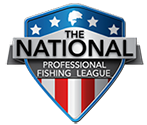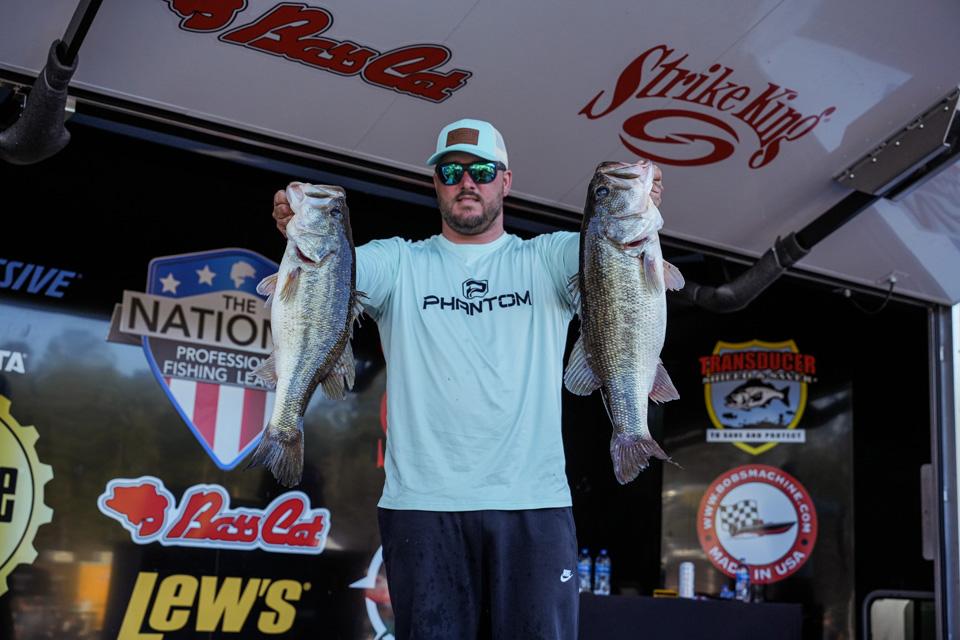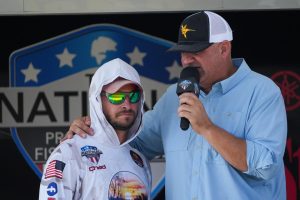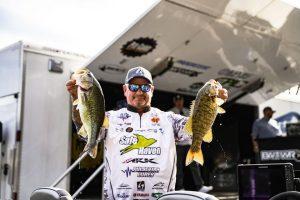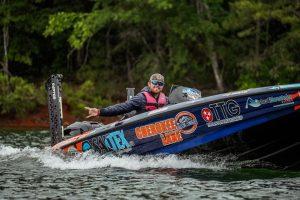Story by Corey Casey | Photos by Tanner & Travis Lyons
Fishing submerged grass is still a relatively new deal on Santee Cooper, where I guide. For nearly two decades, the lake was mostly void of it (outside of the 1990s and again around 2010 when hydrilla and eelgrass made a brief appearance). Over the past four years, though, the grass has made a strong comeback, and it’s changed the entire dynamic of how the lake fishes. For me, it’s been a learning process—understanding how bass set up in and around that vegetation, how they move as conditions change, and how to pick the right presentations to trigger bites.
As someone who has spent countless hours guiding and competing on Santee Cooper, I’ve had to re-learn the lake in many ways. The grass has added a whole new layer of complexity, but also opportunity. The fall season is one of my favorite times to fish this system: when that grass is thick, green, and loaded with life.
Finding the Right Grass Mix
What I’ve learned is that not all grass is created equal. On Santee, we have a mixture of hydrilla and eelgrass, and the best areas often have a blend of both. Hydrilla tends to grow thicker and form canopies, while eelgrass grows more vertically and creates lanes and edges that bass can use as ambush points. When you find both together—especially mixed around some kind of hard cover like a shell bed, a stump, or a little rise—you’ve found what I call a “sweet spot.”
Those areas might only be the size of a small boat, but they can hold multiple quality fish. The key is to cover water until you find those combinations. I’ll spend a lot of time just moving, casting, and feeling out the grass until I locate that right mix. Once I find it, I slow down and really pick it apart.
Conditions and Timing
Through experience, I’ve noticed that calm, sunny days are often the most productive when fishing this type of grass. You’d think the opposite—that overcast skies and wind would help the bite—and maybe that’s true on other waters or with other types of vegetation—but on Santee, it seems the bass position better in the grass when the sun is high and the surface is slick. Maybe it’s because the sunlight penetrates the water and concentrates the fish in the shaded pockets beneath the grass canopy, or maybe it’s just how these fish behave. Either way, when I wake up to bluebird skies and no wind, I know it’s going to be a good day.
Windy or cloudy conditions, on the other hand, tend to scatter the fish and make them harder to pinpoint. I’ll still cover water and catch fish, but I know my bites will likely be fewer and farther between. The good news is, when the conditions line up right, you can have some of the best days of the entire fall.
Favorite Baits
When it comes to baits, I keep it simple and efficient. My two confidence baits for covering water are topwaters and ChatterBaits. Fall is one of the few times of year when I’ll throw a topwater all day long, and my go-tos are the Berkley Choppo and the Berkley Drift Walker. Both create a lot of commotion and let me cover large stretches of grass flats quickly. There’s something special about watching a bass explode through the grass to eat a Choppo. It never gets old!
The key with topwaters is to experiment with your retrieve. Some days, a steady buzzing retrieve works best; other days, they want that walk-the-dog action with long pauses. Let the fish tell you what they want. If I see a lot of bait flicking or bass chasing, I’ll usually start with the Drift Walker. If the activity is slower, I’ll switch to the Choppo to cover water until I get a few hits.
When I want to get below the surface or when a fish blows up on my topwater and misses it, I rely on a Z-Man ChatterBait. It’s one of the best tools for covering water and locating active fish in and around submerged grass. I’ll pair it with a soft plastic trailer that complements the profile—usually a swimbait-style or a fluke style bait depending on the mood of the fish. The vibration of the ChatterBait helps me feel the grass and snap it free when it gets bogged down, which often triggers reaction bites.
Dialing It In
Once I get a few bites in an area, I’ll slow down and fish it thoroughly. Often, those “sweet spots” reload day after day during the fall as fish continue to move in with bait. One of the biggest lessons I’ve learned is not to give up too quickly on an area that looks right. Just because I didn’t get bit in the morning doesn’t mean it won’t turn on in the afternoon as the sun warms the grass and the baitfish become more active.
Fishing submerged grass takes patience, attention to detail, and a willingness to adapt. Every day is a little different, and the fish are always teaching you something new. But when you finally put the pieces together—when you find that mix of hydrilla, eelgrass, and hard cover, and the bass start blowing up on your topwater—there’s no better feeling!
Let’s Go Fishing!
If you want to experience this incredible fall bite for yourself, come fish with me on Santee Cooper. As a full-time guide, I love helping people learn how to read the grass, pick the right baits, and feel that heart-stopping topwater explosion for themselves. Whether you’re after your first bass or your personal best, I’ll do everything I can to make it a memorable day on the water.
Check out this story about a client who caught his second biggest bass ever on a lure he had never used before!
Book your trip today at CoreyCaseyFishingAndGuideService.com or find me on social media at Corey Casey Fishing and Guide Service.
Corey Casey – Angler Profile
